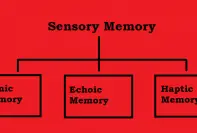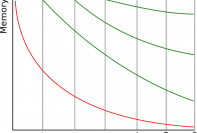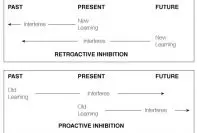Short term memory is primary or active memory that is capable of holding small amount of information for a brief period of time. Short term memory is usually capable of storing information for 30 seconds or even less and without rehearsal,
- Maximum possible time to recall the information is around a minute. Although, it could be erased in a matter of seconds without rehearsal.
- The capacity of this memory has been studied to be around 5 – 9, in average – 7 elements.
Capacity of Short Term Memory
According to the famous, influential article written by the psychologist George Miller, titled “The Magical Number Seven, Plus or Minus Two”, the average capacity of storing information lies between five and nine elements in short term memory. The suggestion seemed to date back to the similar estimation offered by the 19th century researcher Wundt.
Modern researchers agree with Miller regarding his “magical number seven” theory. But, more recent studies have suggested the short term memory capacity to be about four pieces or chunks of information.
However, there are different theories regarding the matter that argue against measuring the capacity of STM in a fixed number of elements.
How Short-Term Memory is different from Working Memory?
Short-term memory and working memory is often used side by side, but these two aren’t the same.
- Working memory temporarily stores, organize, and manipulate information.
- Short-Term Memory only stores information temporarily.
Preventing Loss of Short-Term Memory
Rehearsal
Rehearsal or Maintenance Rehearsal is a process of repeatedly verbalizing or thinking about the information. This process re-enters the information into the short-term memory, and prevents the eradication of information from memory.
Chunking
Chunking is a process that allows an individual to expand his/her short term memory. The process involves organizing material into meaningful groups. For instance, a phone number can be easily remembered if it is chunked into different groups, like; 987-654-3210. Organizing elements in chunks like this improves the recalling capacity, rather than trying to recall a string of 10 digits.
Both these methods can help to switch the storage of information from short-term to long-term memory. Practice and usage of information that pre-exists in long-term memory can help to further improve one’s ability to memorize elements.
Factors Affecting Short-Term Memory
The exact capacity of short-term memory is extremely difficult to measure, as it will vary from one individual to another and also depend on the
- Nature and
- Material to be recalled.
The exact capacity of short-term memory store and a way to define the basic unit of information is yet to be discovered till date.
Other than the nature and material too, there are various factors affecting short-term memory
- Information pre-stored in long-term memory
- Overt rehearsal, e.g. reading aloud
- Pronunciation time
- Individual differences
- Diseases that cause neuro-degeneration
- Ageing
- Post Traumatic Stress Disorder (PTSD)
Additional Information
- Atkinson and Shiffrin propose that information in STM is primarily encoded acoustically, i.e., in terms o sound.
- In STM, the information perceived first and last is more likely to be remembered.
The information perceived first is called primacy effect.
The information perceived last is called recency effect.






